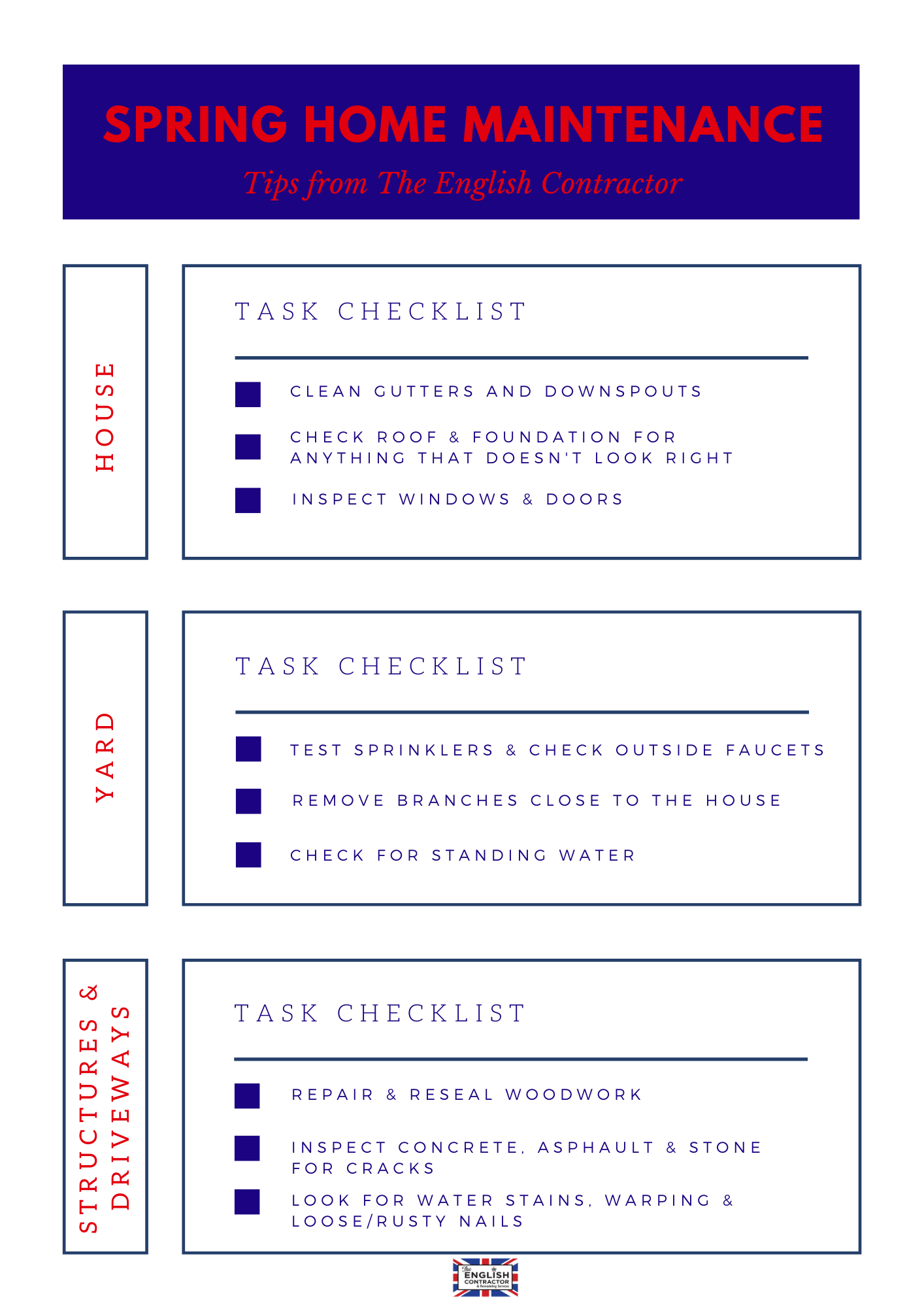A few weeks ago, we shared with you Craig Russell’s check list for spring maintenance for the interior of your home. Although his list is not exhaustive, it is a thought starter and meant as a tool to help keep you on track for those home maintenance projects that will just get away from you over time. Now that you’ve had the time to tackle your list of interior maintenance, it’s time to head to the great outdoors. Don’t let the size of this list intimidate you. Instead, your first step is to merely take a nice, leisurely walk around the outside of your home, looking at the ground around your home, the structure itself, and then important elements like driveway, decks/patios and roof. Once you get into the habit of using this checklist, you’ll be come that much more familiar with your house. This way, when something is wrong, you’ll see it right away and can either take care of it or call in the appropriate professionals.
House
Start by looking directly at your house. A great first step is getting those gutters cleaned. You might want to consider gutter guards at some point, which will add another layer of protection in keeping water away from your house. Give your home a visual inspection, paying specific attention to your roof and foundation. You’re looking for loose shingles and gutters and unusual cracks. Finding these issues early can save you a big headache later. Windows and doors need to be assessed too, since theses are potential entry points for wind and water.
Yard
Next, look for branches or any type of plant/tree growth that is too close to your house too. As we get ready for mosquito season, look for any area of standing water as well. Pooling of water any where near your house can also suggest an issue with grading. If you haven’t yet, it’s time to turn on your outside water and inspect your outdoor faucets. If they weren’t winterized correctly, leaks could emerge now.
Structures & Driveways
Finally, take a look at any outdoor structures and your driveway. Check your deck, porch, and railings for water stains, warping and loose or rusty nails. Keeping up with these small repairs can save you a big project later. After repairs have been made, consider resealing any woodwork. Walk around your driveway and patio, looking for cracks that may have emerged over the winter.
Good habits when it comes to home maintenance will pay dividends in the end. These projects are much easier to keep up with when they are a part of your regular routine and often can stop small problems from developing into large ones.

























